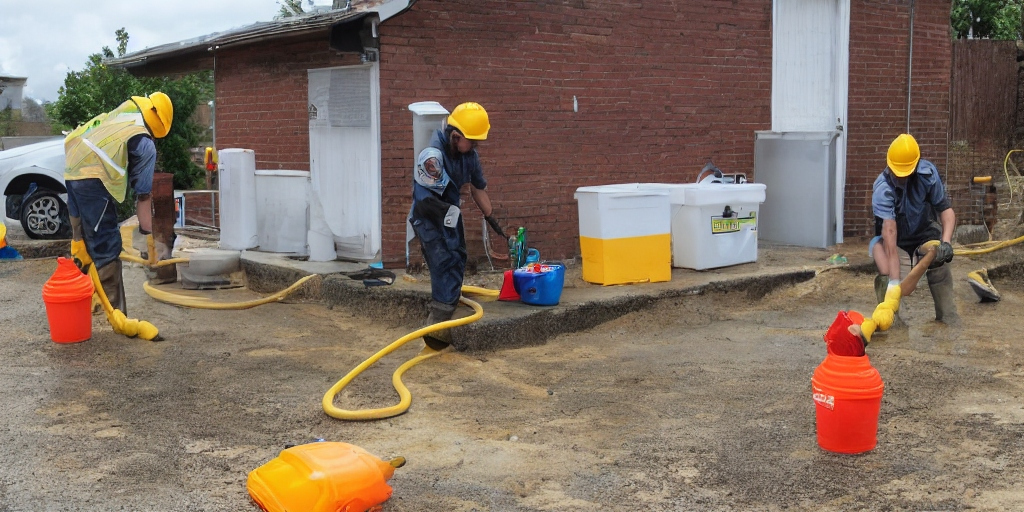Dealing with a sewage flood is a daunting and unpleasant task that requires immediate attention and proper handling. Whether it’s caused by a sewer backup, heavy rainfall, or other unforeseen circumstances, the aftermath of a sewage flood can pose serious health risks and structural damage to your property. In this comprehensive guide, we will delve into the crucial aspects of sewage flood cleanup, providing insights into the cleaning process, safety measures, and the associated costs.
How to Clean After a Sewer Flood
Sewage flood cleanup is a meticulous process that involves a series of steps to ensure thorough cleaning and disinfection. Here’s a step-by-step guide on how to clean after a sewer flood:
-
Assessment and Safety Precautions
The first and foremost step is to assess the extent of the damage and prioritize safety. Before initiating any cleanup activities, make sure to:
- Turn off electricity: Water and electricity don’t mix well. Ensure the power supply is turned off to prevent electrical hazards.
- Wear protective gear: Use appropriate personal protective equipment (PPE) such as gloves, masks, and boots to minimize exposure to harmful contaminants.
-
Remove Standing Water
Standing water is a breeding ground for bacteria and can exacerbate the damage. Use pumps and wet-dry vacuums to remove water from affected areas swiftly.
-
Dispose of Contaminated Items
Porous materials like carpets and insulation may need to be discarded due to their susceptibility to contamination. Properly dispose of these items following local regulations.
-
Clean and Disinfect
Thoroughly clean and disinfect all surfaces with antimicrobial agents. Pay special attention to areas that were submerged in sewage water.
-
Dry and Dehumidify
Ensure that the affected areas are thoroughly dried using dehumidifiers and fans. This step is crucial in preventing mold growth, which can further complicate the cleanup process.
-
Restoration and Repairs
After the cleanup, assess the structural damage and initiate necessary repairs. This may involve replacing drywall, insulation, or other materials that couldn’t be salvaged.
Also Read: Sewage Flood Cleanup: A Comprehensive Guide to Restoration and Safety
How Long Does Sewage Bacteria Last on Surfaces?
One of the primary concerns after a sewage flood is the longevity of bacteria on surfaces. Sewage bacteria can persist on various materials, posing health risks if not adequately addressed. The duration depends on factors such as the type of bacteria, temperature, and humidity. In general, bacteria can survive on surfaces for hours to days In general, bacteria can survive on surfaces for hours to days, and in some cases, even weeks. It’s crucial to address contaminated surfaces promptly to minimize the risk of infections and other health issues. Regular cleaning and disinfection are essential to eradicate lingering bacteria and prevent the potential spread of diseases.
Is It Safe to Stay in a House with Sewage Backup?
Sewage backup poses significant health hazards, and staying in a house affected by it can be risky. Exposure to sewage water can lead to various health issues, including gastrointestinal problems, skin infections, and respiratory issues. If your home experiences a sewage backup, it’s advisable to:
- Evacuate the premises: Ensure the safety of occupants by relocating them to a safer place until the cleanup process is complete.
- Seek professional help: Contact sewage flood cleanup companies immediately to assess and address the situation. Professionals have the expertise and equipment to handle sewage cleanup safely and effectively.
How to Neutralize Sewer Water

Neutralizing sewer water is a critical step in the cleanup process to eliminate harmful contaminants and odors. Here are some effective methods to neutralize sewer water:
-
Use Biodegradable Cleaners
Biodegradable cleaners can break down organic matter and neutralize unpleasant odors. When choosing a cleaner, ensure it is safe for the environment and won’t cause further harm.
-
Apply White Vinegar
White vinegar is known for its disinfectant properties. Mix it with water and apply it to surfaces affected by sewer water. This can help neutralize bacteria and reduce odors.
-
Employ Baking Soda
Baking soda is a versatile and natural deodorizer. Sprinkle it on affected areas, let it sit for some time, and then clean it up. Baking soda can help absorb moisture and eliminate odors.
-
Use Commercial Disinfectants
Commercial disinfectants specifically designed for sewage cleanup can be highly effective. These products are formulated to kill bacteria and neutralize sewage-related odors.
Also Read: The Essentials of Emergency Water Mitigation: Understanding, Costs, and Reviews
Sewage Flood Cleanup Near Me: Finding the Right Assistance
When facing a sewage flood cleanup, time is of the essence. Finding a reliable sewage cleanup service near me is crucial for swift and efficient resolution. Consider the following steps to locate the right assistance:
- Online Search: Utilize search engines and online directories to find sewage flood cleanup companies in your local area. Include location-specific keywords for more accurate results.
- Read Reviews: Look for customer reviews and testimonials to gauge the reputation and reliability of the cleanup services.










